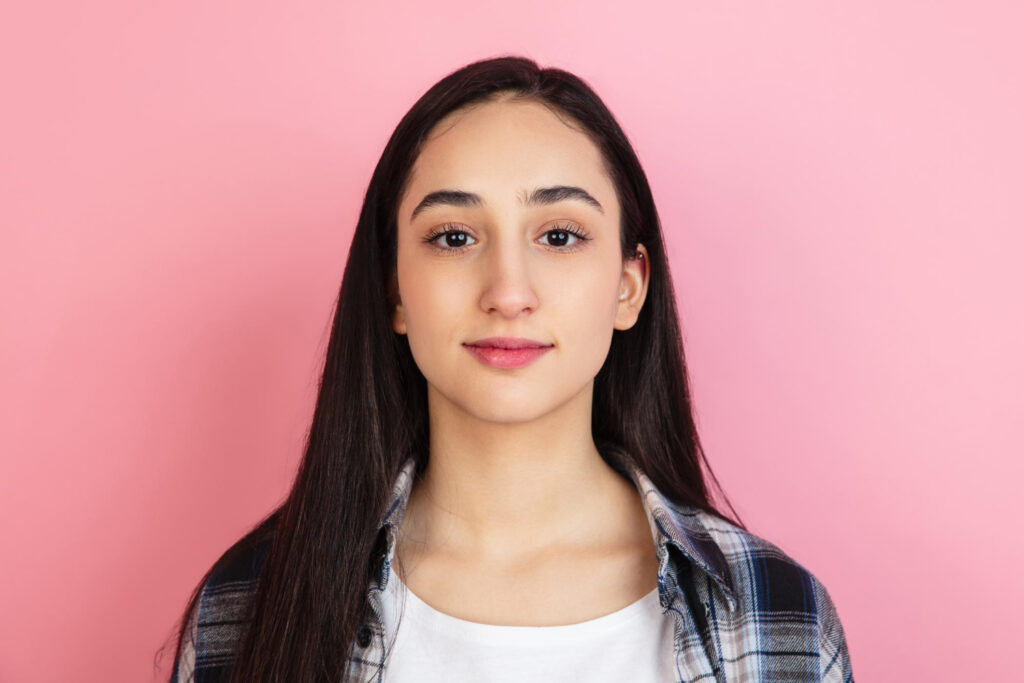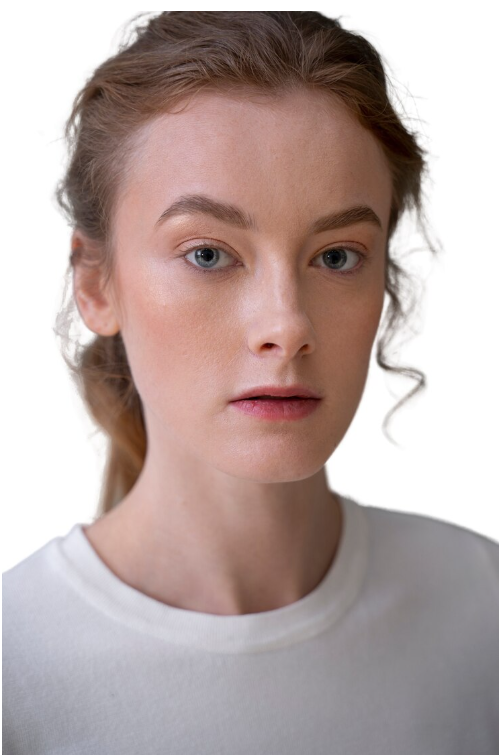Asymmetry in the face can occur from few reasons. Genetics also play a significant role, the
traits you have inherited from your parents can lead to differences in the symmetry of your facial
features. Also, an injury to the face could lead to asymmetry, as can the natural process of ageing.
What is the cause of Asymmetrical face?
There are two types of facial asymmmetry
1) Pathological
2) Developmental
It can be caused by genetics or it can develop due to teeth misalignment, uneven muscles,
major accidents and infections.
Having an asymmetrical face is both natural and common. Few points below which can cause
asymmmetrical face :
Sun Damage:
Sun damage will distributed over your face especially if you spend time in outdoor games, work
outside or spend alot of time on driving. UV rays can cause patches and spots on your face.
Sun damage can cause damage to one side or one area of your face.
Genetics:
The development of facial features is influenced by genetic factors. Inheritable traits from
parents can contribute to the overall appearance of an individual’s face, including symmetry or
asymmetry.
Smoking:
Smoking exposes a face to toxins and can cause vascular problems. Excessive exposure to
ultraviolet (UV) rays can also cause an asymmetrical face.
Developmental Factors:
During fetal development, various factors can influence facial symmetry. Any disruptions or
variations in the development process may contribute to facial asymmetry.
Aging:
As you get older, facial asymmetry increases. This is a natural part of aging. Although, your
bones stop growing, your cartilage continues to grow as you grow old. This means your ears
and nose grow and change as you age, which may cause asymmetry.
Muscle Weakness or Imbalance:
Differences in muscle strength or activity on one side of the face compared to the other can lead
to asymmetry. This may be due to factors such as facial nerve issues, muscle disorders, or
habits like favoring one side while chewing.
Trauma or Injury:
Physical trauma, such as fractures or injuries to the face during your childhood or adulthood can
cause changes in facial appearance and lead to asymmetry.
Dental Issues:
Asymmetry in the jaw or teeth, such as misalignment or missing teeth on one side, can
contribute to facial asymmetry.
How to test if your features are symmetrical Facial Asymmetry?

Testing facial symmetry typically involves visual observations or measurements of specific facial
features. Keep in mind that absolute facial symmetry is rare, and minor asymmetries are normal
and often not noticeable. If you are curious about your facial symmetry, here are some general
methods you can use for self-assessment:
Visual Inspection:
Mirror Test:
Look at yourself in the mirror and visually assess the symmetry of your face. Pay attention to the
alignment of your eyes, eyebrows, ears, and other facial features. Compare one side to the
other.
Photographs:
Take a well-lit photograph of your face from the front. Use the photo to compare the left and right
sides of your face. Some camera apps may also have features for assessing facial symmetry.
Measuring Facial Features:
Using a Ruler or Measuring Tape: You can measure specific facial features to assess symmetry.
Some common measurements include:
Distance between the eyes.
Distance between the eyebrows.
Width of the nose.
Distance between the nose and the upper lip.
Width of the mouth.
How are asymmetrical features treated?

The treatment of asymmetrical features depends on the underlying cause and the degree of
asymmetry. In many cases, mild facial asymmetry is a normal variation and may not require any
specific treatment. However, if asymmetry is more pronounced, bothersome to the individual, or
associated with an underlying condition, various treatment options may be considered. Here are
some approaches to address asymmetrical features:
Non-Surgical Options:
Hairstyling and Makeup:
Simple adjustments in hairstyling or the application of makeup can sometimes create the illusion
of more symmetry.
Orthodontics:
If asymmetry is related to dental issues, orthodontic treatment may be recommended to correct
misalignments or bite problems.
Facial Exercises:
Some individuals explore facial exercises to strengthen muscles and improve facial symmetry.
However, the effectiveness of such exercises is debated, and it’s important to approach them
cautiously.
Surgical Options:
Plastic Surgery:
Facial plastic surgery procedures may be considered to address asymmetry. These can include
rhinoplasty (nose surgery), otoplasty (ear surgery), or procedures to correct facial imbalances.
Facial Fillers or Botox:
In some cases, dermal fillers or Botox injections can be used to enhance symmetry by
addressing volume differences in specific areas of the face.
Orthognathic Surgery:
For individuals with significant jaw misalignment contributing to facial asymmetry, orthognathic
surgery may be recommended. This involves repositioning the upper or lower jaw to improve
facial balance.
Does sleeping on your side causes asymmetrical face?
Sleeping on your side, particularly if you consistently sleep on one side, may contribute to facial
asymmetry over time. This is because the constant pressure on one side of the face against the
pillow can affect the soft tissues, including the skin and underlying structures.
Here are a few ways in which sleeping on your side might impact facial symmetry:
Pressure on the Skin:
The consistent pressure of your face against the pillow can compress the skin and underlying
tissues on one side. Over time, this pressure may lead to changes in skin elasticity and
contribute to the development of lines or creases on that side.
Compression of Soft Tissues:
Continuous pressure on one side can affect the soft tissues, including muscles and fat pads.
This can potentially lead to differences in muscle tone or volume between the two sides of the
face.
Facial Imprints:
Prolonged pressure on the face during sleep can cause temporary imprints or indentations on
the skin. While these imprints usually disappear after some time, frequent and prolonged
pressure may contribute to more persistent changes.
It’s important to note that the impact of sleeping on one side on facial symmetry is generally
subtle and varies among individuals. Other factors, such as genetics, aging, and lifestyle, can
also influence facial symmetry
How can I prevent my face from being asymmetrical?
Facial Exercises:
Facial exercise can help strengthen the muscles which are weak on your face. It can help your
features to balance. Such as raising your eyebrows, or practising different smiles can all
contribute to a more symmetrical face.
Message Therapy:
Messaging your face can improve your blood circulation which also makes your skin healthy and
glowing. It can help you to reduce pufiness and swelling on your face. it can help relax tense
facial muscles, which can contribute to an improvement in facial symmetry.
Can you fix an asymmetrical face?
Moving the Upper and lower jaws into a symmetric position may be the most powerful exercise to correct your face and severe facial asymmetry, but for those who don’t want to do surgery of this facial magnitude, camouflage procedures using facial implants and fat grafting can create an improvement and well result of doing facial symmetry through the exercise
Do asymmetrical face look attractive?
Research using composite faces has shown that symmetrical faces are generally considered more attractive. However, when employing the face-half mirroring technique, studies suggest that humans tend to prefer faces with subtle asymmetry.
Why does my face look asymmetrical in pictures but not in the mirror?
The familiar version of your face is reflected in the mirror, but a photograph captures how you appear to others, not as a reflection. Our perception of vision undergoes extensive post-processing—what our eyes perceive is considerably less detailed than what we perceive or believe
When you’re spending time with friends or strolling down the street, others observe your image without any mirroring. Therefore, the mole you typically see on your right cheek is, in reality, on your left side for someone facing you. Similar to the TikTok inverted filter, standard photos and mirrored selfies provide a glimpse of how others perceive you.







I don’t think the title of your article matches the content lol. Just kidding, mainly because I had some doubts after reading the article.
Your article helped me a lot, is there any more related content? Thanks!
Thanks for sharing. I read many of your blog posts, cool, your blog is very good.